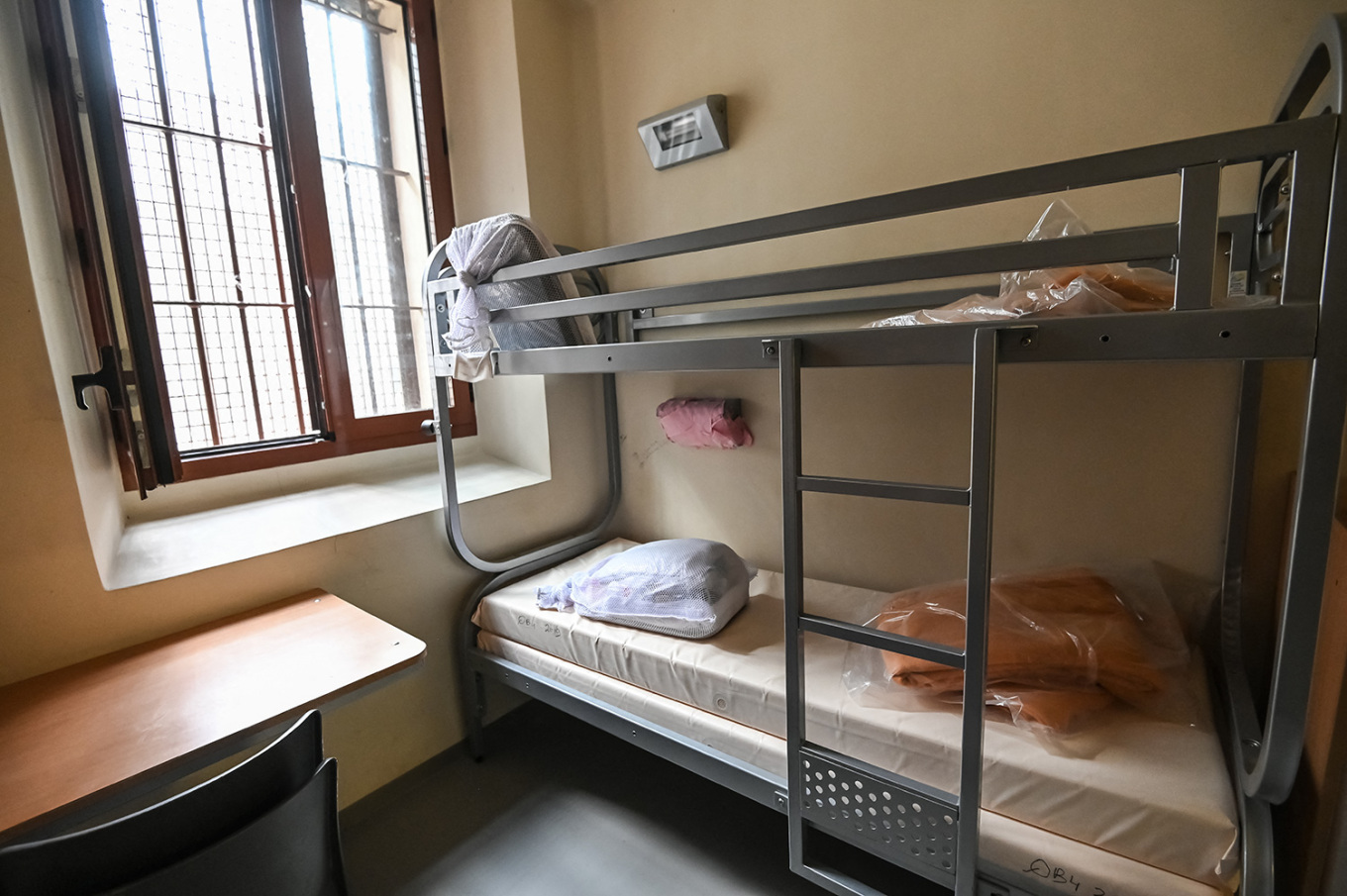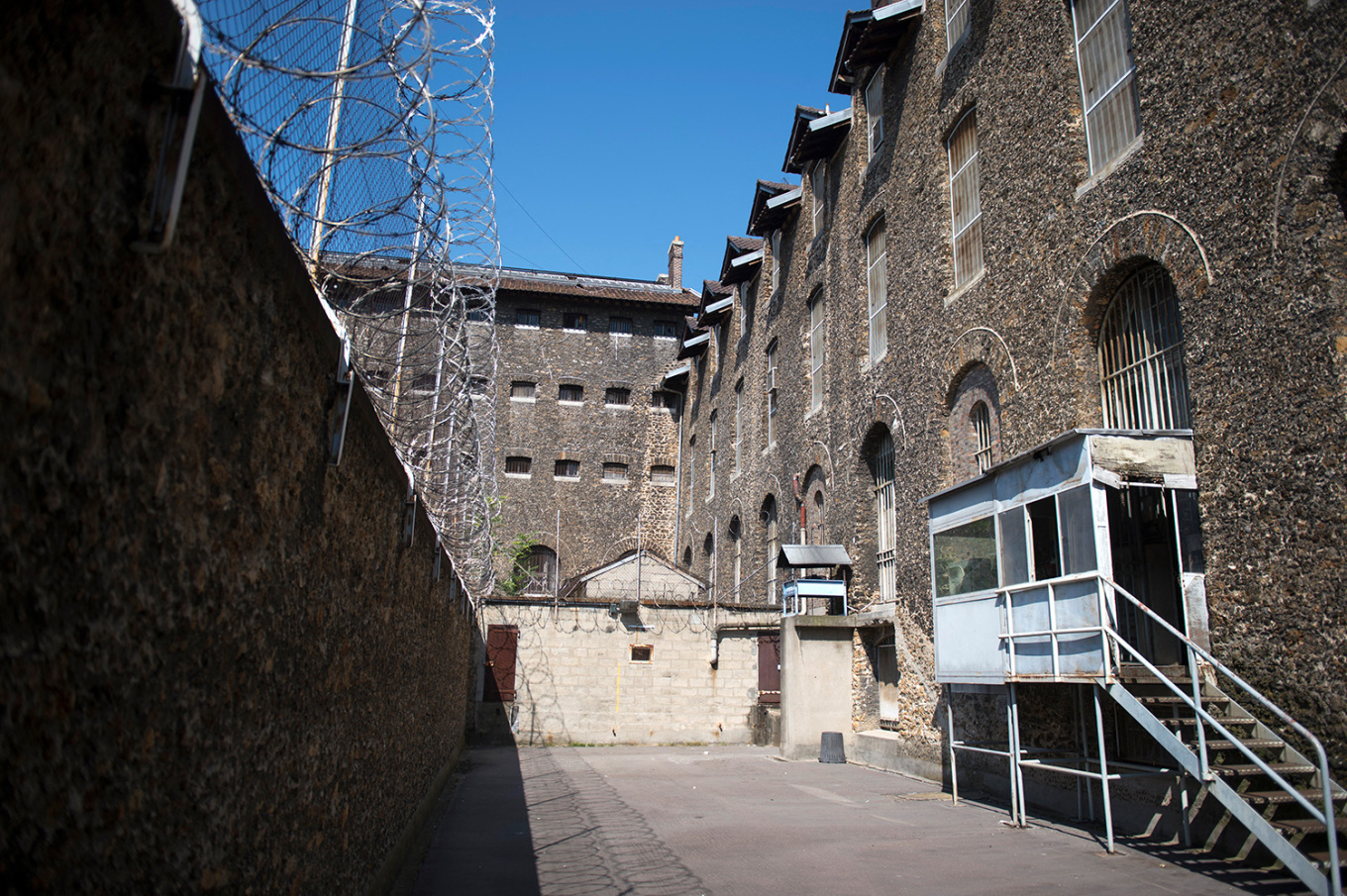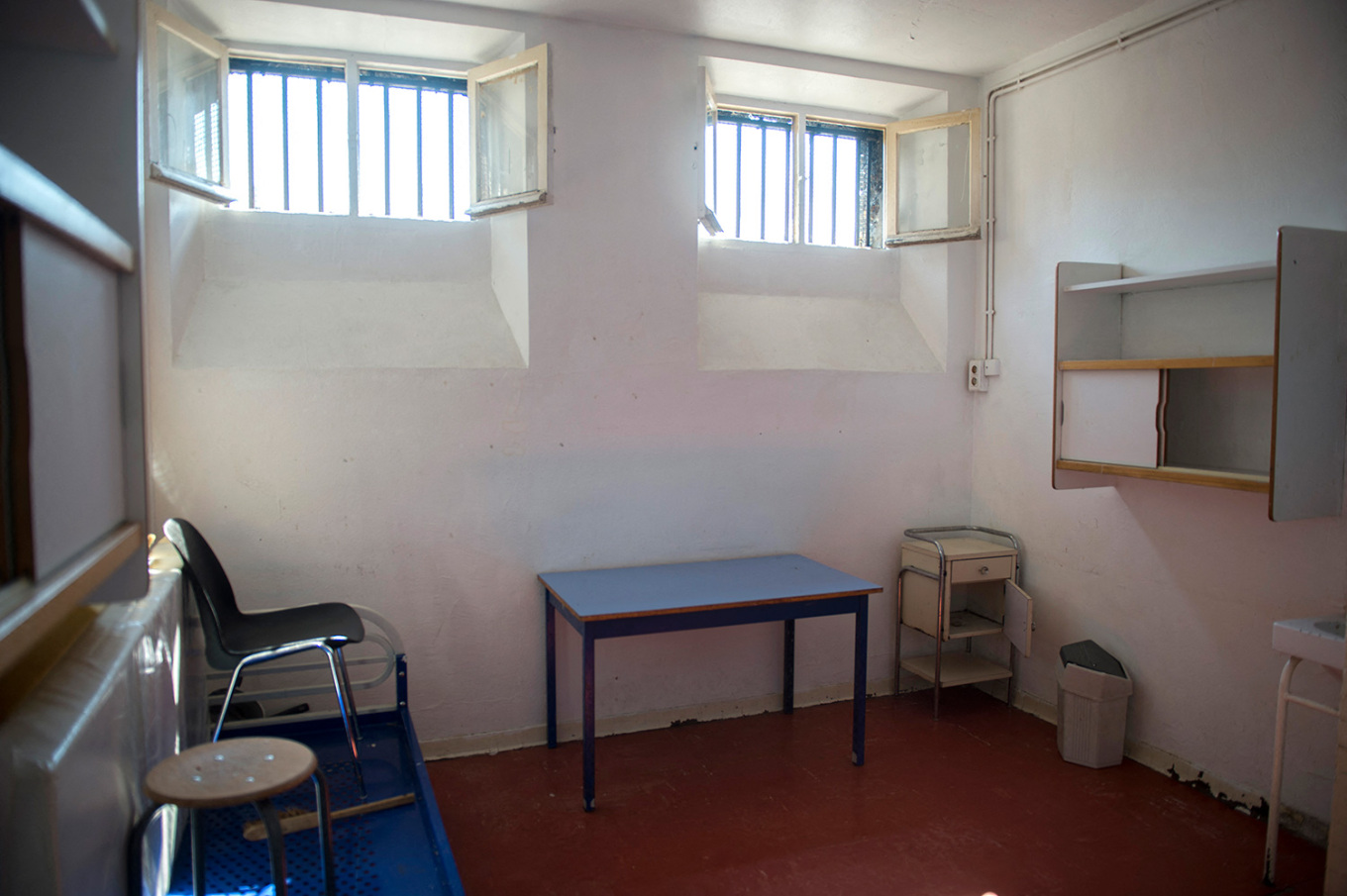Nicolas Sarkozy’s Life Inside the 9-Square-Meter VIP Prison Cell
Former French President Nicolas Sarkozy is currently serving time in a tiny 9-square-meter cell, a space that seems almost impossible to fit the essentials of daily life within. Despite the limited area, the cell is equipped with a bed, a small desk, a shower, a toilet, a window, and even a television. In fact, the television alone costs Sarkozy €14 per month, giving him a small window to the world outside while confined within the prison walls. The cell also has an electric heater, which provides some warmth during the colder months. Beyond the cell itself, Sarkozy has access to the prison gym and library, giving him the chance to maintain both his physical fitness and intellectual engagement during his time behind bars.
This particular area of the prison where Sarkozy is held is colloquially referred to as the “VIP” section. It is designed to house high-profile inmates and has previously accommodated notorious prisoners, including Carlos the Jackal, the infamous international terrorist. The VIP section, although still a prison environment, offers a level of privacy and amenities that regular inmates do not enjoy. Nevertheless, even with these privileges, living in a space of just 9 square meters presents significant challenges.
Within the confined space, Sarkozy has made efforts to personalize his environment. Reports indicate that he has placed ten personal photographs on the walls of his cell. These images are likely intended to provide a sense of comfort and connection to his life outside, a reminder of family, friends, or important moments. In addition to photographs, Sarkozy has brought three books with him, which is reportedly the maximum number allowed for inmates. These include two volumes of “The Count of Monte Cristo” by Alexandre Dumas and “Biography of Jesus” by Jean-Christian Petitfils. The choice of literature may reflect his desire for both intellectual stimulation and moral reflection while serving his sentence.
The bed in Sarkozy’s cell is simple but functional. Given the small space, it likely doubles as a seating area for other activities, such as reading or watching television. The small desk allows him to write, read, or work on personal projects, although space constraints mean that multitasking in the room can be challenging. The shower and toilet are integrated into the cell, a common feature in many European prisons, which helps conserve space and maintain hygiene in such a compact environment. The window is another essential feature, offering natural light and a limited view of the outside world, which can be psychologically important in maintaining a sense of normalcy.

The electric heater in the cell serves as a crucial comfort item, especially during colder months. For someone used to the luxuries and comforts of life as a former president, even small adjustments like controlling the temperature of one’s immediate environment can make a significant difference in day-to-day well-being. The television, although costing a modest €14 per month, serves as a vital connection to current events and entertainment, helping pass the time and reduce feelings of isolation.
Sarkozy’s access to the gym is another important aspect of his prison life. Regular physical exercise is not only crucial for maintaining physical health but also serves as a way to cope with the mental stress of incarceration. Similarly, the library provides intellectual stimulation, allowing him to read, study, or engage in reflective thinking. The ability to use these facilities highlights the differences between high-profile inmates and those held in standard prison conditions, although it does not diminish the reality of imprisonment.

The “VIP” section itself has a unique history, having housed several high-profile and notorious inmates over the years. The presence of figures like Carlos the Jackal underscores the high-security nature of this section while also hinting at its somewhat prestigious status within the prison system. Being placed in this section does not mean freedom from routine prison regulations or isolation from the broader inmate population; it simply offers a level of security, privacy, and amenities that ordinary inmates might not have.
Sarkozy’s choice of personal photographs in the cell is particularly interesting. Incarceration often strips individuals of their usual personal environment, so bringing photographs helps recreate a sense of familiarity and personal identity. It is reported that he has selected ten images, though the exact content of these photos has not been publicly disclosed. They likely include family members, personal milestones, or images that carry significant personal meaning, offering comfort during moments of stress or solitude. This act of personalizing a small, confined space is a common practice among prisoners and serves as a coping mechanism to maintain psychological well-being.
The books Sarkozy chose are also revealing. Alexandre Dumas’ “The Count of Monte Cristo” is a story of betrayal, imprisonment, and ultimately, revenge and redemption. For a former president now facing his own legal battles, the themes of injustice, patience, and perseverance may hold a particular resonance. Meanwhile, “Biography of Jesus” by Jean-Christian Petitfils provides moral and philosophical reflection, perhaps offering spiritual insight or guidance. The restriction of only three books illustrates the strict regulations that even VIP prisoners face, balancing intellectual engagement with the need for control and security within the prison environment.
Despite the confined space, Sarkozy seems to have adapted to the routines of prison life. Daily schedules, including meals, exercise, and limited social interaction, are all part of the structure that helps maintain order within the prison system. For someone accustomed to high levels of public engagement and authority, the adjustment to a life defined by restrictions and schedules can be profound. Maintaining a personal routine, reading, exercising, and finding small comforts within the limited space become critical strategies for coping with incarceration.
Sarkozy’s prison cell may also highlight broader social and cultural perceptions of imprisonment for high-profile individuals. While ordinary inmates may face harsher conditions, the VIP section demonstrates how social status can influence prison accommodations. However, even with these relatively better conditions, the psychological impact of confinement in such a small space should not be underestimated. The 9-square-meter cell represents both the loss of freedom and the challenge of redefining daily life within severe limitations.
The presence of a television, heater, and personal decorations may seem trivial to outsiders, but in the context of a 9-square-meter cell, these elements play a critical role in maintaining mental health and providing a sense of normalcy. Prison life often involves coping with monotony and limited stimulation, and these small amenities can significantly improve the day-to-day experience. The attention to personal details, like photographs and choice of literature, reflects an attempt to humanize the environment and preserve a sense of identity.

In conclusion, Nicolas Sarkozy’s life inside the 9-square-meter VIP cell offers a unique glimpse into the challenges and adaptations required for high-profile individuals in prison. With limited space, carefully chosen personal items, access to intellectual and physical resources, and a controlled environment, Sarkozy is navigating the realities of incarceration in a setting that is both restrictive and somewhat privileged. His choice of books, photographs, and careful use of amenities reflects not only personal coping mechanisms but also a broader narrative about how identity, routine, and mental resilience are maintained even in the most confined circumstances.
The story of Sarkozy in the VIP cell serves as a reminder that, regardless of status, prison life demands adaptation, reflection, and resilience. The careful curation of space, personal items, and routines demonstrates how individuals seek to reclaim a sense of control and normalcy, even when their freedom is significantly curtailed. It also highlights the contrast between ordinary inmates and those afforded VIP treatment, offering a nuanced perspective on how status, privilege, and personal choices intersect within the penal system.
by chat gbt
